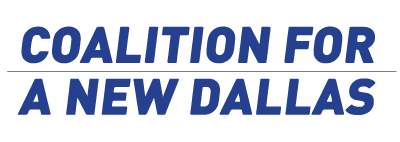I-345
Replace I-345 and Rebuild Dallas.
We believe that we can rebuild Dallas’ urban core by replacing I-345 with boulevards, and transforming the surrounding 245 acres largely defined by empty parking lots and undeveloped land into a mixed-income, mixed-use neighborhood that will generate jobs, create affordable housing, and improve the quality of life for all of Dallas’ residents.
The city of Dallas, once a powerful, sophisticated metropolis, began to lose its economic momentum to the suburbs in the 1970s. A number of factors contributed to the decline, but the most physical among them was the erection of elevated interstate highways right through the city center, facilitating the ease to leave
In 1964, the predecessor to TxDOT, with the blessing and encouragement of the city of Dallas and the Dallas business community, rammed I-30 through the heart of Old East Dallas, leading to decades of decay and reinforcing the North-South divide. In 1973, I-345 was erected, cutting off Deep Ellum and Baylor from downtown Dallas. That same year, I-45 was elevated, destroying the old Spence neighborhood of South Dallas and separating one side of the southern sector from the other. This wasn’t an isolated phenomenon, unique to Dallas. Building elevated highways through cities—usually through the African American sections of cities—was considered progress. Robert Moses famously led the effort not just in New York, but nationally, and he was emulated by highway builders across the country.
Today, cities of all sizes are removing highways, replacing them with an interconnected network of surface streets providing access and value. San Francisco has removed two. West Oakland forced the removal of the Cypress Street double-decker highway. New York took down the Elevated West Side Highway. Milwaukee also removed a highway, spurring economic growth. Most recently, Rochester removed a 2.7 mile sunken highway and filled it in, creating a boulevard and more than six acres for development to improve quality of life and reverse the population flight away from the center of the city
Dallas can do it too.
Where we stand
The Coalition formed in an effort to tear-down I-345. We believe that we can rebuild Dallas’ urban core by replacing I-345 with boulevards, and transforming the surrounding 245 acres largely defined by empty parking lots and undeveloped land into a mixed-income, mixed-use neighborhood that will generate jobs, create affordable housing, and improve the quality of life for all of Dallas’ residents. The Coalition’s fight to tear down highway I-345 and revitalize surrounding neighborhoods compelled TxDOT to create CityMAP, a comprehensive stakeholder-driven study that analyzed transportation projects through the lens of mobility, economic development, and quality of life.
CityMAP ultimately concluded that tearing down I-345 would not only have a negligible effect on traffic, but it would create more than 20,000 jobs, 12,000 residential units and generate $5 billion worth of development for project costs under $500 million. CityMAP goes even further, exploring how the city can change its existing freeways to stitch together the neighborhoods the highways divided. We believe the city of Dallas and TxDOT should work together to follow its tenets. Beginning with Interstate 30 east of downtown.
I-345 Let’s remove it and re-open our city to the local neighborhoods.

